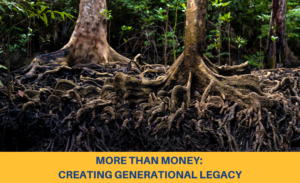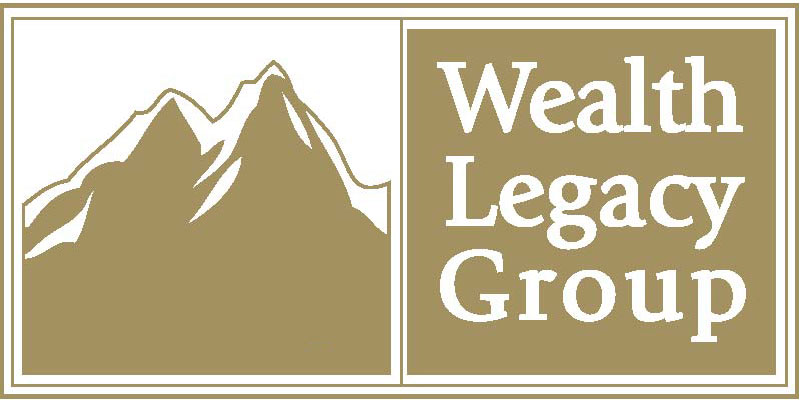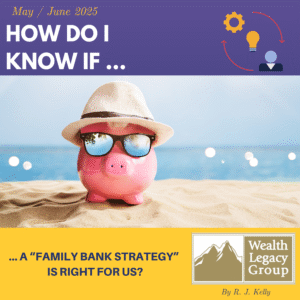 A friend of mine grew up in Hawaii (and yes, before you ask, she’s an incredible surfer). But what’s even more impressive than how she cuts the waves is her family. Her “ohana.”
A friend of mine grew up in Hawaii (and yes, before you ask, she’s an incredible surfer). But what’s even more impressive than how she cuts the waves is her family. Her “ohana.”
In Hawaii, “ohana” isn’t just a word—it’s a way of life. It’s a bond that extends beyond immediate relatives, creating a deep, lifelong connection between generations. It’s a promise that no one is left behind and that family remains strong, no matter what.
One thing we often hear from those reading our newsletter is that we bring up ideas they have not heard of or considered before. We hope this newsletter will continue that streak! My friend’s ohana—family—is remarkable for many reasons. But it is also a living example of a concept I have come to call a “Family Legacy Trust,” one that we will introduce to you in this bi-monthly newsletter.
Do you know a family that:
- Meets regularly on a set schedule throughout the year?
- Has over 100 people come together?
- Enjoys spending time with each other and actually gets along (most of the time)?
If you have more than one or two families you can think of … let alone be a part of … that’s amazing!
How does this happen?
My friend’s family is an example of the above. They invited me to attend a summer luau with all the yummy food one would expect to find. (Still not a fan of poi, but OK. Nothing is perfect!) There were more people than I could count (and I pride myself on being able to count to at least 100), all getting together on the beach with enough food to feed the entire NFL for a week. I watched in amazement.
The family has kept their bonds tight over generations, but they also have not let money become the center of the family. It is a resource, not an idol.
A family-oriented method of reinforcing the glue holding everyone together with a flexible vehicle that supports the family, no matter where they are in life…Imagine That™!
Table of Contents
Let Me Introduce A “Family Legacy Trust™”
First things first … The concept, which I have come to rename a “Family Legacy Trust™,” originates from two brilliant visionaries in the estate and wealth/family advisory space. Estate planning attorney Marvin Blum, founder of The Blum Firm, and Tom Rogerson of GenLegCo. Both are nationally regarded as the best in what they do, and creators of the “FAST” Trust.
Now, here’s a bold statement. I submit that every successful family needs a Family Legacy Trust™ structure in their estate plan.
If you were to tell my friend that her family had created a Family Legacy Trust™ (FLT), she would have looked at you like you sprouted a second head. To them, it doesn’t have a fancy name. It is simply about the ohana. It’s about addressing the issues that every wealthy family faces. When left unattended, those rifts cause most families to disintegrate by the 2nd generation along with the loss of their wealth.
Various members of my friend’s family sit in positions of responsibility and careful stewardship of the family’s real estate investments. Others are responsible for facilitating the gathering times and logistics. Still others are overseeing the intricate aspects of the estate planning and family members in positions of leadership, it funds the activities to continue these bonds.
Family members lend their expertise in legal, financial, or real estate matters. And, although most are teachers, office staff, and construction workers, they still dedicate time to the “governance structure” that keeps their family thriving.
The trust didn’t just provide financial security—it reinforced a shared purpose. It ensured that everyone in the family knew each other, understood their history, and remained connected. This wasn’t just wealth preservation; it was legacy preservation.
So, what if you could make it highly probable your great-grandchildren did not just recognize each other’s names on an ancestry chart. But they also grow up playing together and cherishing the memories of learning “Over the Rainbow” on Grandma’s ukelele.
A Family Legacy Trust™ is a structured mechanism that funds activities and ways of connecting families across generations. Rather than simply distributing wealth, the FLT retains wealth to provide (primarily) two things.
- It organizes family governance (sounds stuffy, but it’s essential)
- It runs the trust, which helps fund the activities that strengthen family bonds
The FLT allows family members to practice financial management, cooperation, and goal-oriented team activities that will help them as they move through their lives and careers.
Typically, an FLT includes a combination of family members and professional advisors:
- Trustees – Responsible for managing the trust’s assets and ensuring funds are allocated according to the family’s goals.
- Advisors or Mentors – family or external professionals who guide beneficiaries in financial literacy, business strategy, and personal development.
- Distribution Committee – A group that oversees funding decisions for gatherings, educational initiatives, and philanthropic projects.
- Beneficiaries – Family members who participate in the programs and activities funded by the trust, keeping the family legacy strong.
The trust can be tailored to support mentorship programs between generations, sponsor workshops on business literacy, or even maintain a cherished family property that serves as a gathering place. By ensuring there is a financial foundation for these meaningful experiences, an FLT helps families remain actively engaged with one another, even as they grow and evolve.
To learn more about how wealth can sustain family bonds rather than divide them, read our related articles on the mechanics of preserving wealth through generations below.
For today, however, we’re going to focus on the other benefits of keeping the family together.
Creating Space for Connection
Perhaps your family was close when you were a child, and you always spent part of the summer with your cousins at a relative’s lakeside cabin in Michigan. However, as the years passed and family members moved across the country, the reunions became less frequent, and the bonds that had once been so strong faded.
For me, it was my mom’s family in Montana, where we gathered nearly every summer. I have such cherished memories of those times with my cousins, aunts, uncles, and lots of cattle! It’s been decades since that tradition flickered and extinguished.
How about you? Do you ever wonder what happened to Uncle Bob and whether he is still ranting about how kids these days don’t even know what a fax machine is? Well, I guess there is always stalking him on Facebook … and others from the clan.
Because of the foresight of my friend’s mother, aunties, and uncles, they created a wealth machine that provides income distributions but also retains the funds to keep the family luaus happening.
Let’s get back to you … your family could establish a Family Legacy Trust™ to ensure your traditions continue. (And even invite Uncle Bob, but not the fax machine collection.) The FLT could fund annual retreats at the lakeside cabin (in Michigan or wherever), cover traveling expenses so that financial constraints won’t prevent attendance. It can also provide resources for structured activities like storytelling sessions where older generations share family history, interactive financial literacy workshops, and even a rotating leadership role to help younger members develop decision-making skills.
Or you can bring board games and go fishing!
What began as a simple effort to reconnect becomes a family tradition that includes everyone, regardless of their circumstances.
Much like a well-tended orchard, strong families require intentional care and nurturing. Without regular attention, relationships … like untended trees … wither over time.
One of the most effective ways to ensure families remain connected is by creating consistent, meaningful opportunities to come together. Whether it’s an annual reunion at a family property, a retreat in a new location, or simply a weekend dedicated to reconnecting, these moments strengthen the ties between family members.
Some ways families can prioritize togetherness include:
- Annual Gatherings – Whether at a cherished family cabin or a new destination, structured time together keeps relationships strong.
- Multi-Generational Activities – From potlucks to storytelling nights, shared experiences create lasting memories.
- Creating A Family Chronicle – Hiring a camera crew or writer to record the family stories and assemble a document (or film) for future generations.
- Learning Together – Families can bring in experts to teach valuable life skills, such as financial literacy, business strategy, or even personal well-being topics like relationship-building or overcoming adversity.
Bridging Generations Through Shared Learning
Speaking of shared learning, did you know that trees talk to each other? (Sometimes, I talk to myself, but that’s another issue.) You read that right. “Talking” trees … stay with me here!
Ecologists discovered that trees in forests communicate and share resources through their root networks, not just with their kin but with their communities. They’ll warn each other of danger and provide nutrients to young trees that won’t reach the sunlight for decades. (I wonder if there is a tree equivalent to Uncle Bob and “kids these days.”)
This is not dissimilar from the often-invisible networks that keep families together, healthy, and strong.
True family wealth isn’t measured in assets—it’s found in the wisdom and life skills passed down from generation to generation. Setting aside time to learn together ensures that future generations inherit money and the knowledge needed to navigate life successfully.
Some examples of shared learning opportunities include:
- Workshops on making sound business and investment decisions
- Classes on reading and interpreting legal documents
- Sessions on how to build strong relationships and avoid common marriage pitfalls
- Guidance on navigating career development and personal growth
- Speakers/experts on life direction, such as how to deal with addiction
By engaging in these activities together, families create a culture of lifelong learning and mentorship, where each generation contributes to the growth of the next.
One of the biggest qualitative benefits seen in FLTs is the successful transfer of values, knowledge, and a sense of purpose to the next generation. The trusts essentially fund a “family curriculum” – from financial education to philanthropy – which yields more responsible, informed heirs.
In the Walton family, each generation is taught the importance of stewardship (e.g., they collectively decide on charitable grants, learning to work together). As well, young members of the Rockefeller join boards of the family’s charities or attend wealth education programs supported by the trust.
In a mid-size family business, as another example, the Gen 3 and Gen 4 members may literally attend a camp to learn about the family business operations.
These activities build financial literacy and family identity. By contrast, many American families avoid talking about money and do not educate their heirs—a factor cited in wealth dissipation. Indeed, heirs who suddenly inherit large sums with “no clue” how to handle them often make poor decisions.
FLTs proactively combat this wealth dissipation by using trust funds to educate and mentor heirs long before they inherit assets. The result is a higher likelihood that inheritors will act as contributors (perhaps growing the wealth or at least responsibly managing it) rather than merely consumers of wealth.
Using Philanthropy To Strengthen Family Bonds
Let’s look at the Rockefellers again here.
The Rockefeller Trust also funds the family’s philanthropic and educational efforts. The family has long emphasized philanthropy as a core value. John D. Rockefeller established the Rockefeller Foundation in 1913, and subsequent generations have created institutions like Rockefeller University and Rockefeller Brothers Fund. The trusts ensure that each generation receives financial support and financial education—for example, by funding business or finance education for heirs and involving them in managing charitable initiatives.
This approach gives heirs a sense of stewardship rather than just passive wealth. It reinforces a shared purpose.
The results speak to strong wealth retention and family cohesion. As of the late 2010s, the extended Rockefeller family (over 170 heirs) still had a collective net worth of about $8.4 billion. The family continues to hold reunions and maintain joint initiatives (the family office and foundations), indicating that the family governance and values have persisted alongside the wealth.
Shared purpose in a family reinforces unity. Giving back to a cause or their community reinforces unity beyond the family group.
Participating in philanthropic projects as a family provides an opportunity to collaborate, solve problems together, and instill strong values in younger generations. Some meaningful activities may include:
- Building homes for those in need
- Participating in food drives or disaster relief efforts
- Funding and engaging in community mentorship programs
- Supporting causes that reflect the family’s shared values
Philanthropy isn’t just about helping others—it’s about deepening family relationships through meaningful action.
Heirs get to practice financial literacy and work together on philanthropic endeavors. Sounds like a win-win to me!
A Family That Stays Together Thrives Together
At the heart of all these efforts is a simple but powerful truth: a connected family is a thriving family. Whether through structured gatherings, shared learning, or giving back together, the goal is to create opportunities that keep relationships strong across generations.
While some families use tools like a Family Legacy Trust™ to fund these initiatives, the real investment is in time, connection, and shared purpose. The greatest legacy isn’t wealth—it’s a family that remains close, engaged, and supportive of one another for generations to come.
To be transparent, I am putting an FLT into my estate planning. It simply makes good sense … and gives me the “warm fuzzies” that my family will still have the means to maintain their bonds after my 156th birthday.
And, for those who, for whatever reason, can’t make that year’s summer get-together, that’s fine. “We’ll miss you. See you next year!”
Is Your Family Prioritizing Togetherness?
If your family is looking for ways to ensure that your bonds remain strong despite life’s challenges, consider how you can intentionally create opportunities to reconnect, learn, and give back together. A family that stays together isn’t just lucky—it’s intentional about making it happen…Imagine That™!
Imagine That!™ is a complimentary bi-monthly newsletter provided by Wealth Legacy Group®, Inc. that addresses various topics of interest for high-net-worth and high-income business owners, professionals, executives and their families. Sign up to receive our monthly newsletter here.
R. J. Kelly, Wealth Legacy Group®, Inc. – January / February 2025
Header image on Canva, one design use license


